#c205
Explore tagged Tumblr posts
Text

Mercedes-AMG C63s (C205) art by Artcrafts
Artcrafts Telegram
3 notes
·
View notes
Text




















Pick of the day - dal mio blog stefanorossiautomotiveinternational.blogspot.com . La mia scelta del giorno ricade oggi su una MERCEDES Classe C Coupé C205 - o quarta serie, o ultima serie prodotta (2016-2023); modello post-restyling 2018. Si tratta, nella fattispecie, di un 220d duemila turbodiesel da 197cv con trazione integrale 4Matic, cambio automatico ed allestimento top di gamma Premium Plus. Targata nel novembre 2024 come chilometri ZERO, dotata di clima automatico bizona, cruise control, navigatore, cerchi in lega AMG da 19 pollici, tetto panoramico apribile elettricamente, telecamere a 360 gradi, impianto hi-fi BURMESTER, Ambient Light, fari a LED, interni in pelle ed alcantara, sedili anteriori riscaldabili, specchietti richiudibili elettricamente, modanature laterali cromate, cristalli privacy e tanto altro ancora - viene messa in vendita da TRIVELLATO, concessionaria Mercedes-Benz in Padova, a 51.100,00 euro. Già, l'usato ha il suo perché. Stefano Rossi - blog's author.
0 notes
Text

Macchi Fighters Survivors
Luigino Caliaro
Translated into English from an original research by Luigino Caliaro
Precious few Macchi fighters have survived intact and are on display today. In total, just seven of these proud Italian fighters are preserved in museums- two C.200 Saetta, two C.202 Folgore, and three C205 Veltro. Of these, two aircraft were captured by American troops and are preserved in the United States while the other five are preserved in their home country. Macchi Fighters Survivors is part of a larger editorial work by Luigino Caliaro titled Macchi Fighters: C.200 Saetta, C.202 Folgore, C.205 Veltro. This stand-alone monograph covers the development, production, technical details, and operations of these variants.
C.200 Saetta MM 8146, National Museum of the U.S. Air Force, Dayton, Ohio

C.200 USAF Museum Photo Luigino Caliaro
This fighter belonged to the 19th series produced by Breda in 90 aircraft in 1942, it was delivered to the Regia Aeronautica Italiana (Royal Italian Air Force- RAI) in June 1942 and assigned to the 372nd Squadron of the 153rd Autonomous Group at the Turin-Mirafiori Airport and subsequently transferred to North Africa where it was assigned to various other squadrons and ultimately at K3 airfield in Benghazi, Libya in November 1942. Captured by the Americans, it was shipped to the United States and displayed at numerous events and exhibitions, towards the end of the 1940s the Saetta was donated to the city of Worcester, Massachusetts.
Photo Luigino Caliaro

The wreck was purchased by a private individual who exhibited it outdoors until 1964 when he sold it to the Bradley Air Museum (New England Air Museum today) in Windsor Locks, Connecticut. At the end of the eighties, for financial reasons, the museum sold it to Jeet Mahal, a collector of artifacts for US museums who in 1989 contacted AerMacchi (Now Alenia AerMacchi) for the restoration. Thanks to the support of the Italian association A.R.E.A, the Italian company began the restoration work on the fighter at the beginning of 1990, which proved to be particularly complex considering the condition of the aircraft. However, thanks to the availability of the technical documentation and with the enthusiastic support of other volunteers and associations the aircraft was officially presented to the public on December 12, 1991, at the Venegono airport, home base of AerMacchi. Nearly a year later, the Saetta was put on display at the National Museum of the U.S. Air Force in Dayton, Ohio. Although slightly different from the original paint scheme, the aircraft was restored with the original codes of aircraft 372-5 MM (Matricolo Militare, Italian for Serial Number) 8146 aircraft, the same codes applied when it was recovered on the Benghazi field by the allies.
AerMacchi C.202 MM91981, National Air and Space Museum Smithsonian Institution, Washington, DC
C.202 Folgore Smithsonian Photo Luigino Caliaro

Subject to a recent article by Adam Estes (click here), this Macchi C.202, which is on display at the National Air and Space Museum Smithsonian in Washington, DC, appears to be the world’s only completely intact and original C.202 Folgore.
Captured in Sicily by American troops, it was transferred to the US and subjected to a series of flight evaluations in September 1945 by the pilots of the Army’s Air Technical Service Command at Wright and Freeman fields. Thanks to recent research by Italian historian Giovanni Massimello, the true identity of this fighter has been documented.
The fighter is AerMacchi MM91981 which was assigned to the 356th Squadron of the 21st Fighter Group (FG) with the individual code 356-8 and was captured by the Americans in good condition at Sciacca airport. After being used and repainted with the upper surfaces in a sand color, the American badges and baptized as Wacky Macchi, by some pilots of the American 31st FG. Upon being shipped to Wright Field in Dayton, Ohio the C.202, coded FE300, was used with approximate Italian colors and insignia until April 1946 with the code FE300 (later FE498) before being placed in storage.
In 1974, the then curator Robert C. Mikesh contacted AerMacchi and the SMA to obtain documentation for its restoration for public display. At the end of the works, in 1975, the fighter was exhibited with the colors of the C.202 “90-4”, a fighter belonging to the 90th Squadron of the 10th Group, 4th Wing when it was operational in Libya in the summer of 1942. Bizarrely it was applied the MM9476 (belonging to a fighter of the IX Series assigned to the 54th Wing, while originally the C.202 90-4 had the MM7795 belonging to the II Production Series). Again, to read the story of this fighter, read Adam Estes’ “The Smithsonian’s Italian Thunderbolt.”
Breda AerMacchi C.200 “Saetta” MM 5311, MUSAM- Museo Storico dell’Aeronautica Militare – Vigna di Valle (Roma)
Macchi C.200 Museo Aeronautica Militare Photo Luigino Caliaro

Preserved at the Museo Storico dell’Aeronautica Militare (Italian Air Force Museum- MUSAM) in Vigna di Valle, this C.200 was assigned to the 93rd Squadron of the 8th Group and after the Armistice, the non-airworthy fighter was assigned to a technical school as an instructional airframe. A peculiarity of the aircraft is that it is equipped with wings with a sharp leading edge, typical of the first examples of construction. In 1961, the aircraft was recovered by the Air Force to be exhibited at various demonstrations and events organized by the Historical Museum. In September 1975 it was temporarily painted as 92-01 to commemorate the activity of the 8th Group on the occasion of the 50th anniversary of the establishment of the 2nd Wing.
C.200 Museo Aeronautica Militare Photo Luigino Caliaro

Subjected to a further restoration in Lecce at the III Aircraft Technical Department in 1976, it emerged with the livery of a C.200 used by the 359th Squadron of the 22nd Autonomous Group which operated in Russia. The paint scheme was only partially correct, but it was corrected it in 1995, thanks to the work of the personnel of the 51st Stormo that restored the aircraft by applying a faithful livery belonging to a wartime Saetta of the 369th Squadron of the 22nd Gruppo Autonomo.
Breda AerMacchi C.202 MM 9667 – MUSAM- Museo Storico dell’Aeronautica Militare – Vigna di Valle (Roma)
Macchi C.202 Folgore Museo Aeronautica Militare Photo Luigino Caliaro

Also displayed at MUSAM, this second C.202 was delivered in March 1943 to the 86th Squadron of the 7th Group/54th Stormo and the 208th Squadron of the 101st Group 5th Wing of the Co-Belligerent Regia Aeronautica in spring 1944. In December 1946 this Folgore was assigned to the 3rd Group of the Flight School of Lecce, with the individual code “63”, until it was stricken in 1948. Subsequently, the aircraft was assigned, first to the Naval Academy of Livorno and then to the Department of Aerospace Engineering of the University of Pisa. In the 1970s the aircraft was recovered by the Collection and Restoration Center of the MUSAM which sent it to Lecce to be restored by the III R.T.A. Today the Folgore is painted to represent the personal aircraft of Lt. Giulio Reiner, commander of 73rd Squadron of the 9th Group of the 4th Wing, based at Fuka Airport in July 1942.
Unfortunately, the various restoration tasks were not carried out with the utmost fidelity, and today the aircraft presents some substantial differences compared to the original fighter. One of the most visible defects is given by the propeller spinner which was poorly reproduced, thus altering the original sleek line of the fighter. Another problem is located in the wings, which were missing when the aircraft was recovered. To proceed with their reconstruction, a left-half wing of a C.200 was recovered at the AerMacchi factory which was used as a pattern for the reconstruction of the right wing. The rounded leading edge was correctly fitted but the ailerons were not modified and remained the ones of the C.200. Furthermore when reproducing the missing wing, it was not taken into account that originally the Macchi wings had different lengths to counteract the torque effect generated by the rotation of the propeller and therefore the current wingspan of the Folgore is about twenty centimeters shorter than to what it should have been.

C.205 Macchi C.200 Museo Aeronautica Militare Photo Luigino Caliaro
Breda AerMacchi C.202/205V “Veltro” MM 9546, MUSAM- Museo Storico dell’Aeronautica Militare – Vigna di Valle (Roma)
Macchi C.205 Veltro Museo Aeronautica Militare Photo Luigino Caliaro

The MUSAM is also home to one of the 100 C.202s that was subsequently converted to the C.205 standard. Originally in service with the 81st Squadron of the 6th Group, 1st Wing, this Veltro was taken over by the 155th Group of the 51st Wing following the Armistice. After various further assignments to squadrons of the Cobelligerent Air Force, it was damaged in Albania on September 15, 1944, with Sergeant Major Moressi of the 93rd Squadron of the 8th Group, 5th Stormo. Once repaired, it remained in service until May 1948 it was assigned to the 3rd Group of the Lecce Flight School, where it remained until December 1949, when it was sent to Macchi for conversion to a C.205 Veltro due to a possible acquisition by Egypt. When that order failed to materialize it was returned to Lecce where it remained until its retirement on July 1, 1952.
Exhibited at the Turin Flight Museum without livery and with only the tricolor roundels, it was subsequently transferred to Vigna di Valle, restored for the first time by the 3rd RTA of Lecce and in February 1994 by the specialists of the 4th RMV of Grosseto, who painted it with the livery of a Veltro of the 97th Squadriglia of the 9th Group of the 4th Stormo, with the codes 97-2 and with the original MM. 9546.
Breda AerMacchi C.202/205V “Veltro” MM 91818, Museo Nazionale della Scienza e della Tecnologia – Milano

C.202 205 Musep della Scienza e della Tecnica Photo Luigino Caliaro
The C.205 exhibited at the Museo Nazionale della Scienza e della Tecnologia (National Museum of Science and Technology) in Milan also appears to be the conversion of a C.202, MM91818 to be specific. Following an initial posting to the 386th Squadron of the 21st Group of the 51st Stormo, it was assigned to various squadrons of the 4th Wing and then to the 209th Squadron of the 102nd Group of the 5th Wing. In 1946, it was assigned to the 3rd Group at the Lecce Flight School, where it operated until July 1, 1948. Like the previous C.205, this fighter was also part of the failed Egyptian order and was returned to the Lecce Flight School. After its retirement from active duty in the early 50s, the aircraft was assigned to the to the “Malignani” Technical Institute where the engine was reportedly run by students on a regular basis. In 1980, the aircraft was recovered by Macchi and turned over to a group of elderly specialists and technicians with the task of returning it to airworthy status. It was a particularly complex project where many components had to be built from scratch, but thanks to the support of other aeronautical companies such as FIAT Avio, which overhauled the engine, Oleodinamica Magnaghi, Itala and Secondo Mona, the dream of many enthusiasts finally came true when the Veltro took to the skies again on September 26, 1980.
C.202 205 Musep della Scienza e della Tecnica Photo Luigino Caliaro 3
The civil registration l-MCVE was applied to the aircraft and the camouflage chosen for the aircraft was similar to that of the C.205 of the 4th Wing which, piloted by Maj. Carlo Maurizio Ruspoli. In the following months the C.205 was proudly exhibited at numerous air shows in Italy and abroad by Macchi test pilots Cecconello and Durione, but unfortunately the fighter was seriously damaged in a take-off accident on July 23, 1986. The C.205 has been repainted as MM9327 (81-5) belonging to the 81st Squadron of the 6th Group 1st Wing in May 1943. However, the livery is not exactly correct, since that serial number corresponds to a Veltro of the 1st Series without the wing cannons.
AerMacchi C.205V “Veltro” MM 92166 – LEONARDO – Aermacchi -Venegono Superiore (VA)
C.205 Veltro Aermacchi Leonardo Photo Luigino Caliaro
This aircraft is the only original C.205 and it’s currently displayed at the entrance of the Aermacchi office building in Venegono (VA) now Leonardo. However, its true origin is in doubt since the fuselage denotes some characteristics typical of the C.202 Folgore, such as a fixed tail wheel and radio access panel of the same shape as those of a late C.202. Nonetheless, taking the serial number 92166 as valid, this Veltro was delivered to the Regia Aeronautica on July 15, 1943, and assigned to 360th Squadron and 378th Squadron of the 155th Group of the 51st Wing with the individual code 378-2. Historical research indicates that this C.205 shot down an American P-40 fighter on July 22, 1943, and on August 2, 1943, Lieutenant Dini intercepted a claimed B-26 Marauder off Capo Carbonara in Sardinia.
C.205 Veltro airworthy
After the Armistice, it was assigned to the 51st Wing until its transfer to the Lecce Flying School in the spring of 1945. Retired in 1959, MM92166 was exhibited at various airshows in a metallic finish without insignias. In 1973, the aircraft was sold to the National Museum of Science and Technology in Milan. It was preserved in the new Air and Sea Transport pavilion sporting the bare aluminum fuselage and still with the pods under the wings. In 1988, an agreement was signed between Macchi and the Museo Nazionale della Scienza e della Tecnologia of in Milan, for the exchange of the museums’ respective Macchi C.205, with Macchi obtaining this only Veltro built at its factory. Following the exchange, the fighter was subjected to a thorough overhaul and restored to airworthy status, but it’s never again seen air under its wings.
AerMacchi C.200 “Saetta” MM not identified, Museo Aeronautico “Gianni Caproni” – Trento
C.200 Fusealage Caproni Museo Foto Luigino Caliaro
The Gianni Caproni Aeronautical Museum in Trento has a pair of fuselage sections, recovered from an aviation enthusiast in Bologna in the early 70s, having purchased them from the University’s Faculty of Aeronautical Engineering. After being offered to AerMacchi, the wrecks were purchased by the Caproni Museum.
Although the identity of the aircraft remains unknown, it is hypothesized that it could be one of the two C.200s of the 8th Group which were to be handed over to the Allies after the Armistice. It is presumed that during the transfer flight, one of the pilots made an emergency landing not far from his home in the Marche region. The dismantled fighter was hidden disassembled by the pilot and returned after the war to the Air Force which probably gave it to the local College’s Engineering Faculty. In 1992, in anticipation of its exhibition at the new headquarters of the Caproni Museum in Trento, an attempt was made to reconstruct the fuselage, but this was not possible due to the complexity of the work. The restoration work on the fuselage revealed the original codes of the aircraft, 91-4 relating to the 92nd Squadron of the 8th Autonomous Group in 1943. Further analysis revealed the individual number 86 which confirmed that the fighter was used by the 86th Squadron of the 7th Group of the 54th Wing. An important detail was the discovery of part of the 54th Wing’s badge, represented by a tiger’s head. After painstaking restoration work which started at the end of 2010 what remains of the aircraft was exhibited in the main hall of the Caproni Museum at the Trento Mattarello airport.
Museo dellaeronautica Militare Italian Air FOrce Museum Vigna Di Valle Phot my Museum Staff22
Author ProfileRelated Posts
17 notes
·
View notes
Text
Cement Lined Ductile Iron Pipe: Engineering Excellence for Water Infrastructure
Ductile iron pipes with cement mortar lining (CML) represent the gold standard for potable water distribution, combining the mechanical strength of ductile iron with the corrosion resistance of a cementitious barrier. This dual-layer protection system, standardized under AWWA C104/ANSI A21.4, ensures long-term hydraulic efficiency and water quality preservation.
1.1 Historical Evolution
1950s: First adoption in US municipal systems
1970s: Standardization by American Water Works Association (AWWA)
2020s: Advanced application techniques like spin lining
2. Technical Specifications & Manufacturing Process
2.1 Material Composition
Component FunctionStandard RequirementDuctile Iron BaseStructural integrityASTM A536 (Grade 65-45-12)Cement LiningCorrosion protectionAWWA C205 (3-5mm thickness)
2.2 Production Stages
Centrifugal Casting: Molten iron spun in molds to create pipe shells
Annealing: Heat treatment to enhance ductility
Lining Application: High-speed spinning deposits cement slurry uniformly
Curing: 28-day moisture-controlled hardening
3. Performance Advantages
3.1 Hydraulic Efficiency
Hazen-Williams Coefficient (C): 140-150 vs. unlined pipe (C=100)
Friction Loss Reduction: Up to 40% compared to bare iron
3.2 Corrosion Protection Mechanisms
pH Stabilization: Lining maintains water pH 7-10.5
Electrochemical Barrier: Prevents galvanic corrosion
Microbial Resistance: Inhibits iron bacteria colonization
4. Installation & Maintenance Best Practices
4.1 Jointing Methods
Push-On Joints (Tyton): Most common for DN80-DN600 pipes
Restrained Joints: For seismic zones (e.g., Megaflange)
Flanged Connections: Pump stations and valve interfaces
4.2 Lifecycle Management
Inspection Tools: CCTV cameras for lining integrity checks
Rehabilitation: Spray-on cement mortar for localized repairs
5. Comparative Analysis with Alternative Materials
5.1 vs. Unlined Ductile Iron
50-year cost savings: 62% lower maintenance (USEPA data)
Water quality: Eliminates "red water" incidents
5.2 vs. Plastic Pipes
Fire Resistance: Maintains integrity at high temperatures
Load-Bearing: Withstands 4x higher external loads than HDPE
6. Global Standards & Certifications
North America: AWWA C104, NSF/ANSI 61
Europe: EN 545:2010
Asia: GB/T 13295 (China), JIS G5527 (Japan)
7. Emerging Innovations
Nano-modified linings: Graphene-enhanced cement for crack resistance
Robotic application: Precision lining for large-diameter pipes
Conclusion
Cement lined ductile iron pipe remains the most reliable solution for water utilities prioritizing longevity and public health. With proper installation per AWWA standards, these systems routinely exceed 100-year service life in aggressive soil conditions.
0 notes
Text
Cement Lined Steel Pipe Supplier: Your Guide to Durable Piping Solutions
In industries where corrosion resistance and durability are critical, cement lined steel pipes have emerged as a game-changing solution. As a trusted cement lined steel pipe supplier, we understand the vital role these pipes play in ensuring long-lasting performance in water, wastewater, and industrial piping systems.
Whether you’re managing municipal water infrastructure or working on industrial projects, choosing the right supplier can dramatically impact the efficiency and lifespan of your system.

What is a Cement Lined Steel Pipe?
A cement lined steel pipe is a carbon steel pipe internally coated with a layer of cement mortar. This lining provides several benefits, including:
Corrosion Resistance: Cement acts as a protective barrier, shielding the steel from corrosive water or chemicals.
Improved Flow Efficiency: The smooth cement surface reduces friction, allowing for better fluid flow.
Extended Lifespan: These pipes typically last longer compared to unlined steel or cast iron pipes.
Cost-Effective: Long-term durability reduces the need for frequent repairs or replacements.
Why Choose a Reputed Cement Lined Steel Pipe Supplier?
Partnering with a reliable supplier ensures quality, consistency, and on-time delivery. Here's what sets a good supplier apart:
1. High-Quality Materials
Premium suppliers use high-grade carbon steel and cement mixtures to ensure the pipes meet international standards like AWWA C205, ASTM A53, and others.
2. Custom Sizes and Specifications
Top suppliers offer a wide range of pipe diameters and lengths, tailored to your specific project requirements.
3. Certifications and Compliance
A reliable supplier ensures all products adhere to safety and performance standards, complete with certifications for testing and inspection.
4. Timely Delivery and Logistics
Industrial projects often run on tight timelines. A dependable supplier has robust logistics to ensure timely delivery, no matter the scale of your order.
5. Technical Support
Expert consultation on material compatibility, installation, and maintenance ensures your project runs smoothly from start to finish.
Applications of Cement Lined Steel Pipes
Cement lined pipes are versatile and used in a variety of sectors:
Municipal Water Supply & Distribution
Sewage and Wastewater Systems
Industrial Water Transport
Fire Protection Systems
Cooling Water Systems in Power Plants
How to Choose the Right Cement Lined Steel Pipe Supplier?
Here are a few tips:
Check Industry Experience: A supplier with years of proven expertise is more likely to deliver quality and consistency.
Ask for Client References: Testimonials or case studies show real-world success.
Inquire About Customization: From thickness to linings, your supplier should offer custom options.
Ensure After-Sales Support: From guidance to problem resolution, post-purchase support is essential.
Final Thoughts
If you’re searching for a dependable cement lined steel pipe supplier, look for a partner that prioritizes quality, compliance, and service. With the right supplier, you ensure not only the longevity of your pipelines but also the long-term success of your project.
0 notes
Link
https://www.yedekplus.com/adblue-enjektoru-mercedes-w205-s205-c205-w213-c238-c253-x253-a0004901113/
0 notes
Text
Philips Clocks by Michael Graves: Aesthetics for the Win!
I've realized, since writing my post on alarm clocks that look cool, that part of why I love alarm clocks so much is their aesthetic design! Which makes sense, considering I love aesthetic design of products in general. (As an example, I recently bought this wild-looking 20-year-old digital camera from Olympus!)
Today I'm going to lean into the aesthetic design side of things with two clocks that are pretty darn boring when it comes to features, but pretty darn cool when it comes to appearance! They are the Philips clock radios designed by Michael Graves. Let's dive in!


About Michael Graves
According to Wikipedia, Michael Graves "was an American architect, designer, and educator." I'm not a biographer, so I'm not going to get too far into it, but one of Graves's occupations was a product designer.
Circa 2001, Graves partnered with Target and several manufacturers to create a line of Target-exclusive designer housewares. (This seems to me like the ancestor of all Target's cute-as-heck in-house brands today. I buy half my wardrobe at Target.) Unlike a lot of designer products, my sense is that the Michael Graves line at Target was quite affordable, which I really appreciate. Products that bring joy should be accessible to normal folks!
Here are some photos of the Michael Graves Design collection of products:



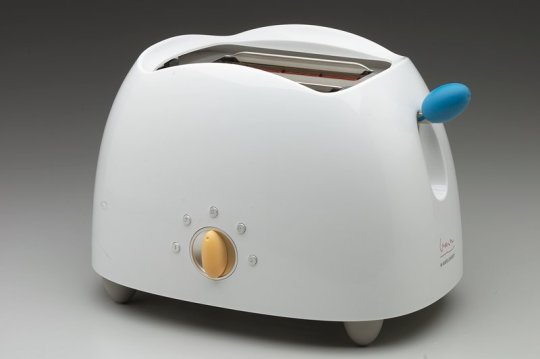
Just Google "Michael Graves Target" and you can find tons more photos (like this slow cooker, or this answering machine).
You'll probably notice a few shared design details in the products shown above. They tend to be neutral colors, either white or black. They have rounded shapes with as few hard edges as possible. They have orange and blue accents (opposites on the color wheel). In particular, the toaster, blender, and slow cooker (all manufactured by Black & Decker) have little orange dials front and center, with silver buttons arcing over the dial like a little rainbow. And finally, many of these products stand up on cute little feet, rather than lying flat on the counter.
That brings us to the alarm clocks!
MG-C200/17 (black) and MG-C205/17 (white)





Philips manufactured two alarm clocks for the Michael Graves Design collection at Target. This is one of them, and it's my personal favorite!
It's got all the trademarks of this product line that I mentioned. The orange dial right at the center, the silver buttons arcing over it, the blue accents, the stubby little feet, the curvy shape.
It's also got two round adorable speakers, one on either side. A lot of alarm clocks conceal their speakers, covering them in fabric or hiding them on the sides, back, or bottom. But this one wears them loud and proud! I think they add to the retro feel of this machine.
And geez, I love that orange dial SO MUCH. I want to grab it so bad. It's so bright and fun and tactile, and it's right at the very center of the controls. Lots of alarm clocks hide their volume dials too, but again, this clock wears it loud and proud.
I also love the single orange switch hiding on the back of the clock, for setting the time or alarms. It's a little impractical on the back, yes. But I feel like it's kind of an adorable surprise. Like, wait, there's one more thing! And it makes me think of the clasp on a briefcase, both in where it's located and what it does. It's a latch at the top of a boxy-ish thing that you slide when you need to use that thing, and then slide again when you need to restore the thing to its resting state.
As I said, feature-wise, this clock is very boring. It has an AM/FM radio with digital tuning. It has a self-powered backup. And that's it!
But what's so interesting about this clock is how it wears its clock-ness as a badge of honor. I've showcased beautiful clocks before that do a lot of concealing their more functional parts, allowing aesthetics to take center stage. (The Philips AJ4000 is a good example, with tons of its switches and dials hidden on the sides.) But this clock draws attention to its speakers, and volume dial, and preset buttons, and setting switch. It finds beauty exactly in all the things that make it a clock. How fun is that?
MG-C100/17 (black) and MG-C105/17 (white)







This is just an egg. Or maybe it's a penguin, with its silly little round toupee (you know penguins and their toupees) and two little blue buttons for a forehead. And the speaker is its little tummy!
(Clearly it's time to go to bed. I'm losing it over here.)
This clock has less of the Michael Graves trademarks shared by the other products. No cute little feet, no orange dial, no silver buttons arcing. It's also a little bit less functional than the other clock I shared, with analog rather than digital tuning for the radio.
But it's still round and cute, and it's got blue dials and buttons paired with orange switches, plus a giant snooze button right at the very top. There's also something kind of interesting to me about how this clock has almost none of its controls on the front. I don't know, there's something sort of casually subversive about having all the important stuff on the sides and back for no reason. Like a person who lives their life totally differently from you, but they're doing fine!
That's all!
I hope what I'm writing makes any sense at all, but even if not, there's cute alarm clock photos and that's what matters!
Also, I've had an interesting realization. I've always loved Sony alarm clocks most, because there's a ton of them and they're all cool. But I'm realizing I like almost as many Philips clocks! These are the sixth and seventh (I think) that I've discussed on this blog, and I actually have an eighth in mind to share soon. I think Philips's clocks have less in common with each other, so my brain likes them individually but forgets to mentally group them into a single category. But they are indeed made by the same company, and that company has given us a lot to talk about here, which I appreciate!
See y'all soon!
Image credits:
Google Images, Newfields, Reddit, Gibson's, Minneapolis Institute of Art, Burnrate, eBay, eBay, eBay
0 notes
Text
Nothing better than a call from a doordasher asking where my address is in broken english. All i told him was its vega apartments building c apt c205 and he seemed fine with that response lol.
0 notes
Text
Air filter Green Filters G791021
Equip your vehicle with the latest industry products! Buy Air filter Green Filters G791021 and don’t miss out on anything! Compatible Vehicle: Infiniti Q50 (V37) 2,2L D 170 Cv 125 Kw 13_ Infiniti Q70 (Y51) 2,2L D 170 Cv 125 Kw 13_ Mercedes C Classe (W205/A205/C205/S205) 250 BLUE TEC 204 Cv 150 Kw 02|14_ Mercedes C Classe (W205/A205/C205/S205) 250 BLUE TEC 4-MATIC 204 Cv 150 Kw 02|14_ Mercedes C…

View On WordPress
0 notes
Text
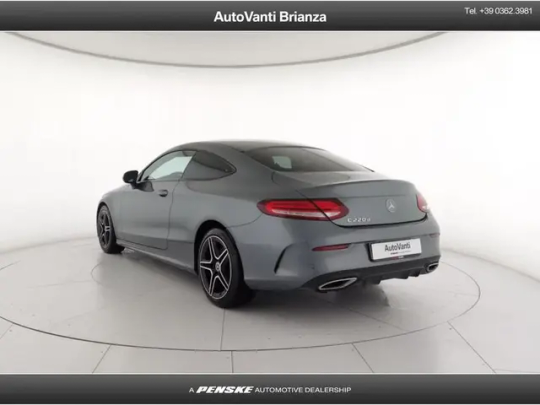



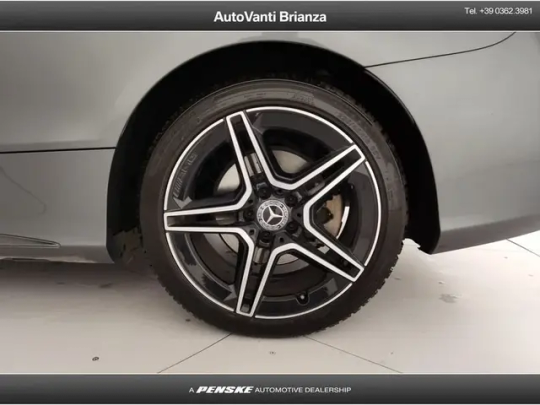
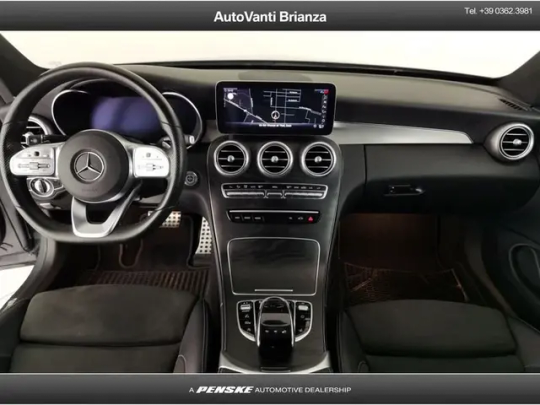
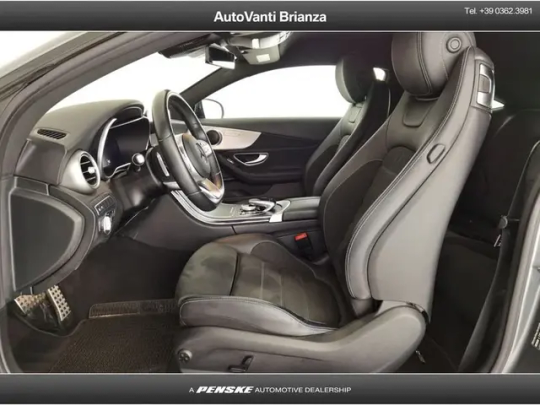


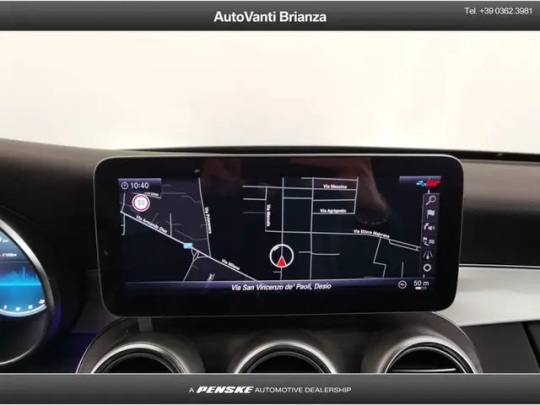
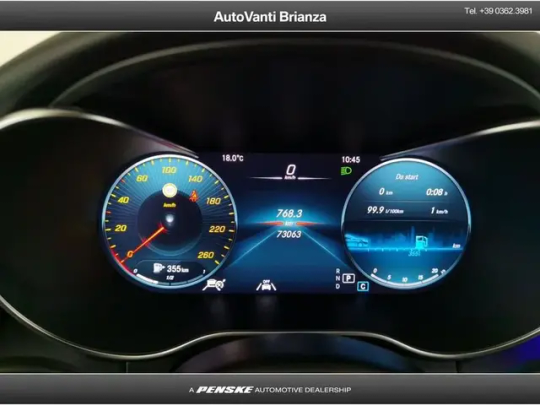
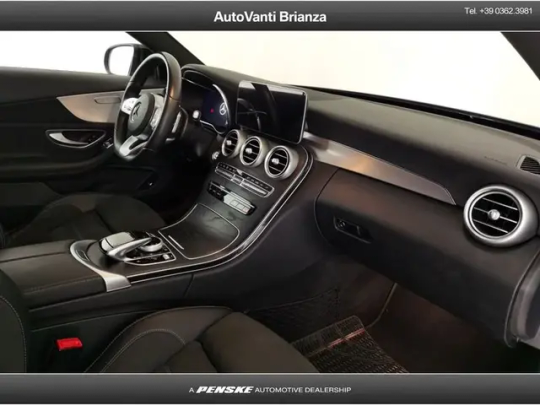
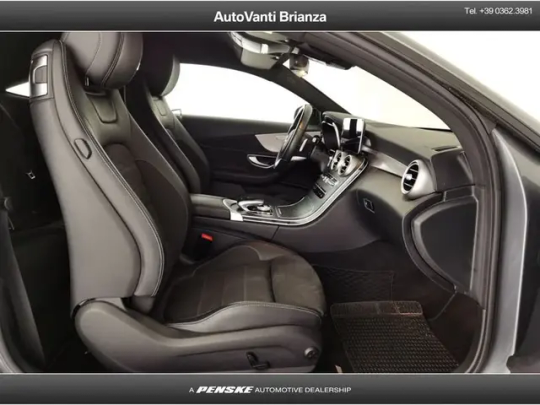



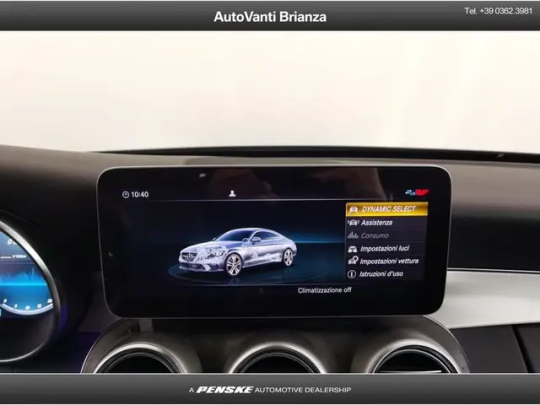
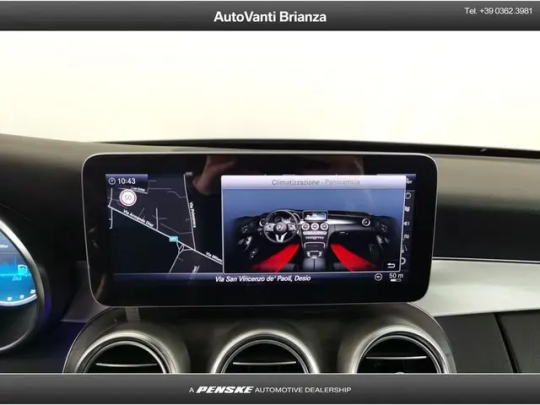


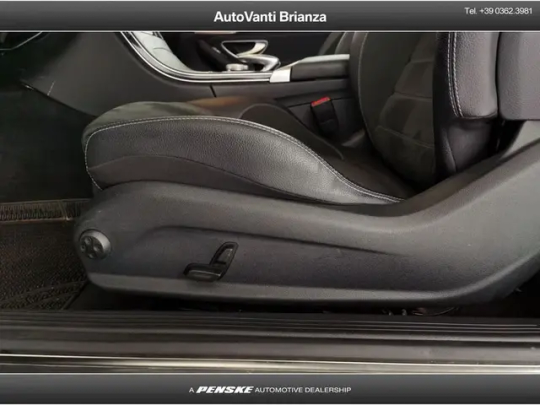
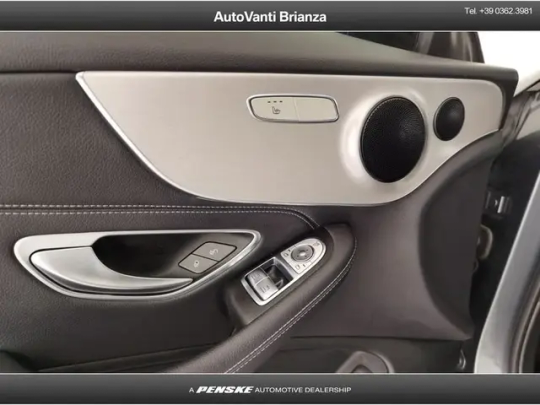

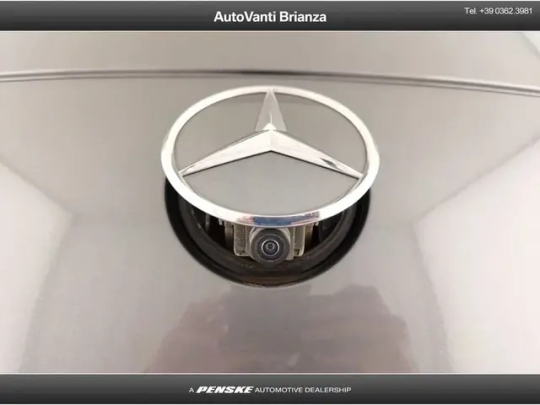
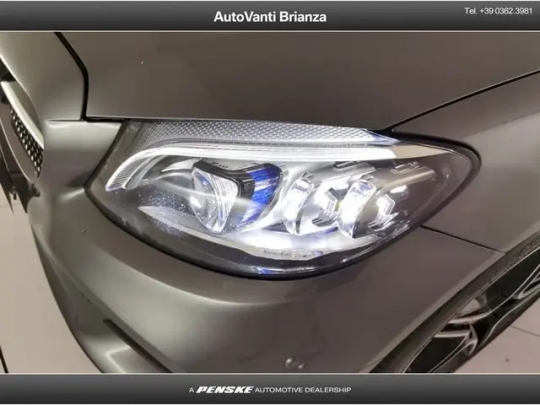


Pick of the day - dal mio superblog stefanorossiautomotiveinternational.blogspot.com : La mia scelta del giorno ricade oggi su un'ottima offerta commerciale di Mercedes Classe C Coupè C205 - o serie precedente; modello post-restyling. Si tratta, nella fattispecie, di un 220d duemila turbodiesel da 194cv con cambio automatico ed allestimento top di gamma Premium. Ancora recente, in quanto immatricolata nel gennaio 2021, con 73.000 km all'attivo (chilometraggio ancora contenuto per un turbodiesel di questo livello qualitativo), dotata di clima automatico bizona, cruise control, navigatore, cerchi in lega AMG da 18 pollici, telecamera per retromarcia, sedili anteriori con regolazioni elettriche, specchietti richiudibili elettricamente, cristalli privacy e tanto altro ancora - viene messa in vendita da PENSKE CARS, gruppo plurimandatario con vettura visibile presso loro showroom di Desio, all'allettante cifra di 33.900,00 euro. Già, l'usato ha il suo perché.
0 notes
Text
Rafturi | Aosom Ro
https://www.aosom.ro/mobila-si-decoratiuni/rafturi-c205.html
View On WordPress
0 notes
Photo

175 notes
·
View notes
Photo

jeudm stance #workwheels #workwheelsthailand #artofwheel #wworkculture #meisters1 #mercedesbenz #c205 #coupe #stance #airsuspension #accuair #kstanceshop #thailand https://www.instagram.com/p/B5DTQx9AbQp/?igshid=11d5e5pq3dr3k
#workwheels#workwheelsthailand#artofwheel#wworkculture#meisters1#mercedesbenz#c205#coupe#stance#airsuspension#accuair#kstanceshop#thailand
1 note
·
View note
Link
https://www.yedekplus.com/amortisor-arka-gazli-mercedes-c-class-w205-s205-c205-a205-a2053208430/
0 notes
Photo

Coupe in the house !!! #c205 #coupe #cvsmartauto #cvsmartautosb https://www.instagram.com/p/BzlcJnhHo0w/?igshid=1se2pdx6kwkxs
3 notes
·
View notes